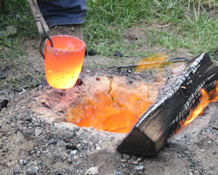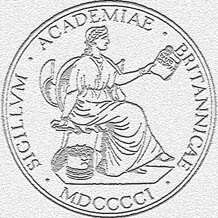Crafting Networks in Viking Towns
Organisers: Steven Ashby and Søren M. Sindbæk
Funded by the British Academy
By studying how individual technologies and codes of practice are distributed in time and space, the project aims to trace networks of close, even personal links between sites or regions
This project brings together leading UK and Scandinavian archaeological specialists to undertake a comparative survey of crafted products and workshop assemblages from Viking-period towns in Northern Europe in order to clarify the role of long-distance interactions in early medieval urbanism. Striking similarities of material culture show that these places, though sometimes separated by hundreds of kilometres, were often as tightly related as neighbouring villages. Yet we have but a vague understanding of this communication. Did early medieval urban communities form a densely connected ‘global village’, or did they interact through selective, personal links to a few distant sites?
Technologies and cultural communication
Crafted products, along with the refuse from workshops, are among the richest and most informative categories of archaeological evidence pertaining to urban sites of the Viking period. Comparative investigations, however, were hitherto hampered by the fact that most assemblages were analysed on a single-site or regional basis. This has fed a reductive view, which almost certainly understates the scope of communication in the early medieval world. The question of how craftspeople learned and transmitted technologies as items of cultural knowledge has seen only sporadic treatment.
This project will seek to develop a more appropriate vision of early medieval communication, as a field in which interaction occurred by dynamic movements of knowledge, cultural resistance and thresholds. By studying how individual technologies and codes of practice are distributed in time and space, the project aims to trace networks of close, even personal links between sites or regions, or conversely substantiate claims for a conspicuous lack of such links between otherwise similar places.
Recent years have seen significant changes in the study of artefacts and production. These developments have been twofold. First, the application of new analytical techniques in artefact studies (e.g. metallographic, isotopic, and biomolecular techniques) has enabled us to revisit previous research, and many accepted results are now being considered in in the light of this new evidence. Second, the interpretative focus of medieval artefact studies has shifted from the functional treatment of objects that characterises the main body of basic research literature, to a concern with processes of production, and the social agency of technology.
Furthermore, the introduction of social network theory has redirected attention toward the process of communication, and pointed to the significance of towns and other centres in the learning and transmission of cultural knowledge, including technology. These ideas are waiting to be explored in relation to specific and detailed evidence.
Skills, learning and Viking Age artisans
The work will focus on five particularly well-evidenced groups of crafts: ironworking, non-ferrous metalworking, antler- and bone-carving, pottery-making and textile-production. Within each area the group will examine the available evidence with respect to four specific research questions:
- Identification and Distribution of Technologies. How are individual technologies and codes of practice distributed in time and space between communities of craftspeople across nodal sites in early medieval northern Europe?
- Understanding Crafts as Cultural Knowledge. How does the operational sequence of manufacture and use identify the cultural knowledge and skills of artisan groups and their learning processes?
- Qualifying Viking-period Communication. How does the knowledge and practice of craftspeople characterise long-range communication in the historical context of Viking-period Northern Europe?
- Modelling Interaction Networks. How did long-range communication operate as part of complex social networks in a pre-modern society?
The project comprises workshops and targeted investigations aimed to establish a benchmark for knowledge of cultural and technological exchange in the Viking period, while also identifying gaps in current knowledge. The outcome will be presented as a series of survey articles in an edited volume.
Participants
- Dr Steven P. Ashby, lecturer, the University of York
- Dr Søren M. Sindbæk, lecturer, the University of York
- Dr Johan H. C. Callmer, Professor, Humboldt University, Berlin
- Dr Lise Bender Jørgensen, Professor, Norwegian University of Science & Technology, Trondheim
- Dr Ailsa Mainman MIFA FSA, Assistant Director, Head of Artefact Research, York Archaeological Trust
- Dr Unn Pedersen, Lecturer, University of Oslo, Norway
- Dr Patrick Ottaway FSA, MIFA, Archaeological Consultant, PJO Archaeology
- Prof Mats Roslund, Head of Studies, Department of Archaeology and Ancient History, Lund University
- Penelope Walton Rogers, FSA, Dip.Acc.,Archaeological Consultant, The Anglo-Saxon Laboratory and Textile Research


